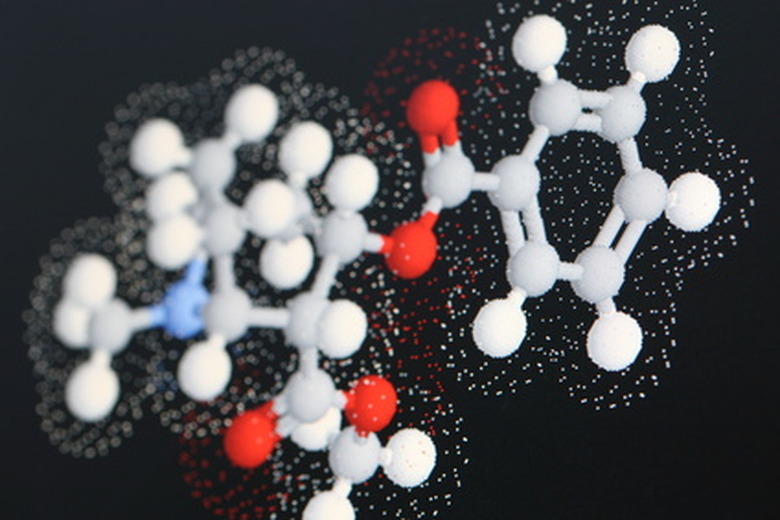What Is The Comparison Between Atoms & Molecules?
Physical matter is made up of atoms and molecules. An atom is the sub-component of a molecule, or the smallest unit of matter. It is the smallest part an element can divide into. A molecule is made up of atoms that are bound by ionic, covalent or metallic bond.
Properties
Properties
An atom exists either as a neutral component (with equal number of protons and electrons) or as an ion (a positive ion has greater number of protons than electrons, and a negative ion has more electrons than protons. The number of protons in an atom is called its atomic number (Z), and the number of neutrons in an atom is called its neutron number (N). The mass number (A) of an atom is the sum of protons and neutrons (Z + N). A molecule is neutrally charged and exists in one of two states: stable or unstable. Its mass can be calculated from its molecular formula.
Components
Components
An atom is composed of subatomic particles (electron, neutron and proton), a nucleus and electron cloud. Electrons are negatively charged particles that reside in an electron cloud that revolves around the central nucleus. The mass of an electron is approximately 0.0005 times that of a proton. Protons are positively charged particles that reside within an atomic nucleus. A nucleus is a neutral particle that accounts for nearly 99.9 percent of the total mass of an atom. A molecule is composed of two or more atoms that are held together by a strong chemical bond.
Size
Size
An atom is approximately 0.2 nanometers in diameter. A nanometer equals 0.0000000001 meters. The smallest molecule in nature is the diatomic hydrogen molecule (H2) which is 0.74 angstrom in length. An angstrom is equal to 0.1 nanometers or 1.0 x 10-10 meters.
Shape
Shape
Atoms have no fixed shape and exist as rings, lobes or spheres. The shape of a molecule depends upon the arrangement of its constituent atoms. Molecules can be linear, trigonal planar, tetrahedral, trigonal pyramidal, trigonal bipyramidal and octahedral, depending on their atomic composition. A diatomic molecule is linear in shape, while a molecule made from three bond pairs (BF3) is trigonal planar, with its F-B-F bonds at 120 degrees to one another.
Types
Types
There are numerous types of atoms, each with a different size, molecular weight and name. Examples of common atoms include hydrogen atom, sulfur atom, oxygen atom and nitrogen atom. The various types of molecules include: diatomic, homoatomic and hetroatomic molecules. A diatomic molecule is made up of two atoms; a homoatomic molecule is made up of two (or more) atoms of the same element (or substance); and a hetroatomic molecule is made up of two or more atoms of different elements. According to "Foundations for Chemistry," molecules are either simple and complex. Simple molecules are made up of a single atom while complex molecules are made up of two or more atoms.
Cite This Article
MLA
, Natasha Gilani. "What Is The Comparison Between Atoms & Molecules?" sciencing.com, https://www.sciencing.com/comparison-between-atoms-amp-molecules-6382556/. 24 April 2017.
APA
, Natasha Gilani. (2017, April 24). What Is The Comparison Between Atoms & Molecules?. sciencing.com. Retrieved from https://www.sciencing.com/comparison-between-atoms-amp-molecules-6382556/
Chicago
, Natasha Gilani. What Is The Comparison Between Atoms & Molecules? last modified March 24, 2022. https://www.sciencing.com/comparison-between-atoms-amp-molecules-6382556/
